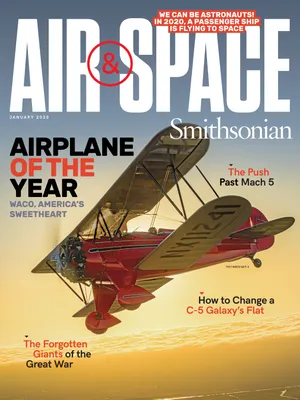How the Museum Got Its Moon Rock
One of the Smithsonian’s rarest and most popular treasures was the inspiration of an Egyptian-born geologist.
/https://tf-cmsv2-smithsonianmag-media.s3.amazonaws.com/filer/3d/9f/3d9f9a13-61c7-459e-89f8-86b68af770cf/16f_dj2020_201909090073_live.jpg)
When the crew of Apollo 17 went to the moon in December 1972, one of their tasks was to bring back rock and soil samples so that scientists could better understand the moon’s geologic history. Astronauts Gene Cernan, Harrison Schmitt, and Ronald Evans would return to Earth with nearly 250 pounds of lunar souvenirs.
The largest rock—collected by Schmitt at the last minute—was a lunar basalt weighing in at 18 pounds. A sliver of this priceless rock has been on display at the Smithsonian’s National Air and Space Museum since the building on the National Mall opened in 1976.
Recently, the 3.8 billion-year-old artifact made a short jaunt across the Mall to the Smithsonian’s Museum of Natural History while the National Air and Space Museum undergoes renovation. Natural History was the logical choice for temporary storage, says Priscilla Strain, who curates the lunar samples: “Through the years, Natural History has dealt with research samples, which is why NASA was happy for us to store them securely over there.”
The moon rock has already made a reverse trek back to the Museum, and is once again on display in the Boeing Milestones of Flight Hall, where it remains one of the Museum’s most enduring and popular artifacts: “The idea of touching another world,” says Strain, “is something that really resonates with folks.”
There are only four other touchable moon rocks on Earth, and the fragments all come from the same basalt, number 70215. How did the moon rock bypass the fate of all other Museum artifacts, which carry a strict “hands-off” policy?
We can thank Farouk El-Baz, who was the Director of the Museum’s Center for Earth and Planetary Studies at its 1976 opening. When developing exhibits for the Museum, El-Baz thought back to his pilgrimage to Mecca. One of the ceremonial duties of pilgrims is to touch the Black Stone in the Great Mosque; Islamic tradition says that the stone was sent down from heaven by Allah.
The Black Stone had withstood the touch of millions of hands over 13 centuries, El-Baz told the Boston Globe in 1976. And that made him think: “Why not do this with a moon rock?”
Despite El-Baz’s involvement with the Apollo program—he played a crucial role in identifying all of the Apollo landing sites—he had a hard time convincing NASA to part with even a small sample. But after jumping through various bureaucratic hoops, El-Baz was rewarded with a few ounces of lunar rock, the first ever touchable moon rock.
Some of the lunar materials have only recently been studied, using technology unavailable during the Apollo years. “The touch rock is lost to science, but it’s only a small piece of a big rock,” says Strain. “There are other pieces of the rock that are available for study.”
The Museum holds four other lunar samples, all on loan from NASA, and all of which will again go on display in 2022, in the new gallery. Included is a piece of basalt from Apollo 15. “Dave Scott was the astronaut who collected it,” says Strain. “He was so into geology that his wife took a class in the subject so she could talk to him about it at the dinner table.” While driving the lunar rover, Scott saw the rock off to the side at a site not approved by mission control. But he couldn’t resist collecting it and pretended to fix his rover seat belt as he surreptitiously picked it up. “That’s why it’s nicknamed the ‘seat belt basalt,’ ” says Strain. There’s also an anorthosite from Apollo 16, “an example of the really old Highland rocks on the moon,” says Strain, and a piece of breccia and soil samples from Apollo 17.
“All together they really tell a good story of the history of the moon,” says Strain. And it’s a story that scientists are not yet finished learning.
